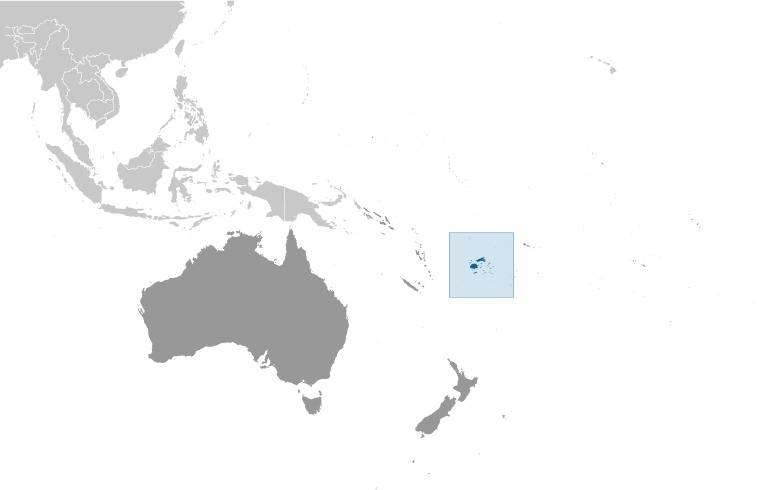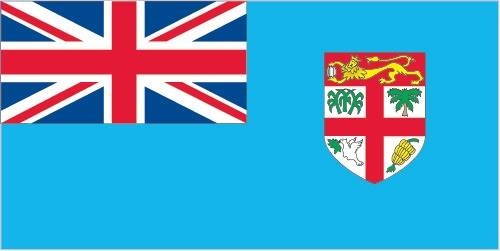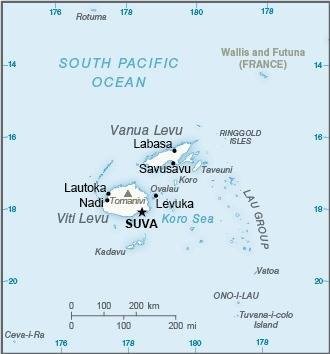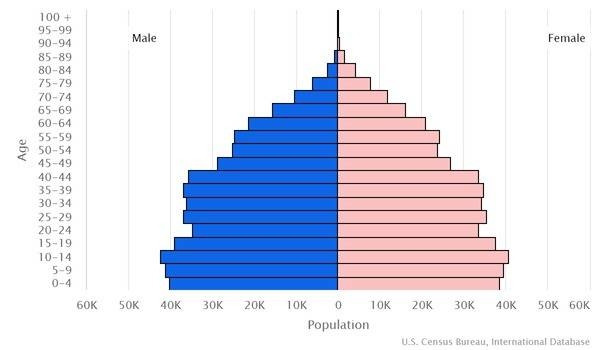Country Summary




Introduction
Background
Fiji became independent in 1970 after nearly a century as a British colony. Coups and a 1990 constitution that cemented native Melanesian control of Fiji led to heavy Indian emigration. The population loss resulted in economic difficulties, but ensured that Melanesians became the majority. A new constitution enacted in 1997 was more equitable.
Geography
Area
total: 18,274 sq km
land: 18,274 sq km
water: 0 sq km
Climate
tropical marine; only slight seasonal temperature variation
Natural resources
timber, fish, gold, copper, offshore oil potential, hydropower
People and Society
Population
943,737 (2022 est.)
Ethnic groups
iTaukei 56.8% (predominantly Melanesian with a Polynesian admixture), Indo-Fijian 37.5%, Rotuman 1.2%, other 4.5% (European, part European, other Pacific Islanders, Chinese) (2007 est.)
Languages
English (official), iTaukei (official), Fiji Hindi (official)
Religions
Protestant 45% (Methodist 34.6%, Assembly of God 5.7%, Seventh Day Adventist 3.9%, and Anglican 0.8%), Hindu 27.9%, other Christian 10.4%, Roman Catholic 9.1%, Muslim 6.3%, Sikh 0.3%, other 0.3%, none 0.8% (2007 est.)
Population growth rate
0.44% (2022 est.)
Government
Government type
parliamentary republic
Capital
name: Suva (on Viti Levu)
Executive branch
chief of state: President Ratu Wiliame KATONIVERE (since 12 November 2021)
head of government: Prime Minister Voreqe "Frank" BAINIMARAMA (since 22 September 2014)
Legislative branch
description: unicameral Parliament (51 seats; members directly elected in a nationwide, multi-seat constituency by open-list proportional representation vote to serve 4-year terms)
Economy
Economic overview
tourism-based Pacific island economy, susceptible to sea-level rises; new energy infrastructure investments; major foreign direct investment; COVID-19 crippled tourism sector; privatizing state-owned enterprises; military coups have destabilized labor force
Real GDP (purchasing power parity)
$9.86 billion (2020 est.)
Real GDP per capita
$11,000 (2020 est.)
Agricultural products
sugar cane, cassava, taro, poultry, vegetables, coconuts, eggs, milk, ginger, sweet potatoes
Industries
tourism, sugar processing, clothing, copra, gold, silver, lumber
Exports
$1.23 billion (2020 est.)
Exports - partners
United States 29%, Australia 14%, New Zealand 7%, Japan 6%, Tonga 6% (2019)
Exports - commodities
water, refined petroleum, fish, raw sugar, gold (2019)
Imports
$1.97 billion (2020 est.)
Imports - partners
Singapore 18%, Australia 13%, China 13.8%, New Zealand 11%, France 11%, South Korea 8% (2017)
Imports - commodities
refined petroleum, aircraft, cars, wheat, broadcasting equipment (2019)
Exchange rates
Fijian dollars (FJD) per US dollar -
Page last updated: Wednesday, May 11, 2022
